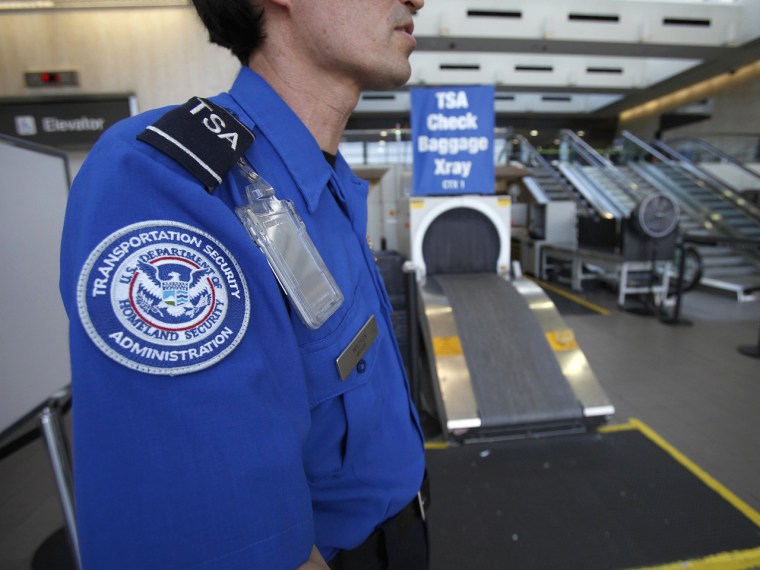Editor’s note: A correction has been made to this story.
With 55,000 employees and a budget topping $7.5 billion, the Transportation Security Administration (TSA) is often seen as big, bumbling and overbearing, but recently it’s been acting more like a tween than a tyrant.
If the recent announcement that it will expand the PreCheck program is any indication, the nearly 12-year-old agency may finally be overcoming its growing pains and morphing into the agency it was meant to be.
“We’re not in the business of eliminating risk,” said TSA Administrator John Pistole in announcing the expansion on Friday. “We’re in the business of trying to manage or mitigate risk in a way that makes sense to promote the free movement of people with good security.”
To accomplish that, the agency has gone to great pains to explain that it’s shifting from a “one size fits all” approach, in which all travelers are subjected to the same level of scrutiny, to a “risk-based intelligence” approach, in which it will give less scrutiny to travelers it deems low risk in order to devote more resources toward those it doesn't know much about.
Those efforts include letting children 12 and under keep their shoes on, allowing passengers 75 and older to leave their shoes and jackets on and the original launch of PreCheck two years ago.
The current expansion represents a major step in that effort. Previously limited to the members of the frequent flier programs for seven U.S. airlines and government-run Trusted Traveler programs, the agency expects to open enrollment to all U.S. citizens later this year.
To apply, travelers will have to visit an enrollment center, provide fingerprints and identification and pay a fee of $85, which is good for five years.
'Security theater'
Not surprisingly, perhaps, the announcement has unleashed the usual barrage of public commentary: it’s another money-grab, a violation of people’s privacy and another piece of “security theater” that does nothing to actually enhance passenger safety.
Left out of the discussion is the fact that in many cases TSA gets slammed no matter what it does.
“Each time TSA tries to put a new measure in place or take a measure out, Congress and the public weigh in on whether those measures are effective and whether they’re constitutional,” said Bob Baker, an associate professor of global security and intelligence at Embry-Riddle Aeronautical University.
As an example, one need only look at the debate over TSA’s plan to allow travelers to carry small knives on board. Initially announced in March, implementation was postponed and eventually canceled last month after a massive backlash from government officials, aviation union groups and a significant portion of the public.
Right or wrong, the backlash ignored the fact that TSA screeners currently deal with roughly 2,100 small knives every day, that almost anything — a pop can, a sewing needle — can be fashioned into a weapon and that it’s highly unlikely that anyone could ever bring down a plane with a Swiss Army knife.
“TSA could’ve done a better job of explaining the difference between injuring someone and bringing down a plane,” said Baker. “They could have explained what they were doing and why.”
Part of the problem lies in the nature of the agency itself. Created in the wake of 9/11, the entire system was created as a response to one incident involving four planes.
Kitchen sink approach
“They initially needed to throw in the kitchen sink because of the nature of the risk they were dealing with,” said Kiersten Todt, president of Liberty Group Ventures LLC, a risk-management company. “They couldn’t afford to decide, well, this or that measure doesn’t make sense and then have something happen.”
Unfortunately, that approach also created an environment that allowed TSA to metastasize into the 55,000-employee behemoth that has traditionally moved slowly, explained itself poorly and made headlines for its use of “strip-search scanners,” “don’t-touch-my-junk” moments and enhanced pat downs of children, seniors and cancer patients.
Twelve years later, the kitchen sink is in a storage facility somewhere alongside the puffer machines, backscatter scanners and other experiments that didn’t pan out.
“They had to get to a place where they have enough data to let some slack out in certain areas because they know where the risks are,” said Todt. “They can now distill their procedures in a way that evaluates the risks better.”
Whether that will be enough to assuage a public that’s predisposed to despise the agency is unknown. While some applaud the proposed PreCheck expansion, others are already concerned that it creates a two-tier system between rich and poor, that it may let potential terrorists game the system and that it’s yet another example of NSA-style information-gathering run amok.
“You’re not going to get to a point where people say, 'I had a great TSA experience,' but seeing the efforts being made may make them a little more patient and tolerant,” said Todt. “It will take time for TSA to undo the damage that was created after 9/11 but, hopefully, that’s the trajectory they’re on.”
Rob Lovitt is a longtime travel writer who still believes the journey is as important as the destination. Follow him on Twitter.
